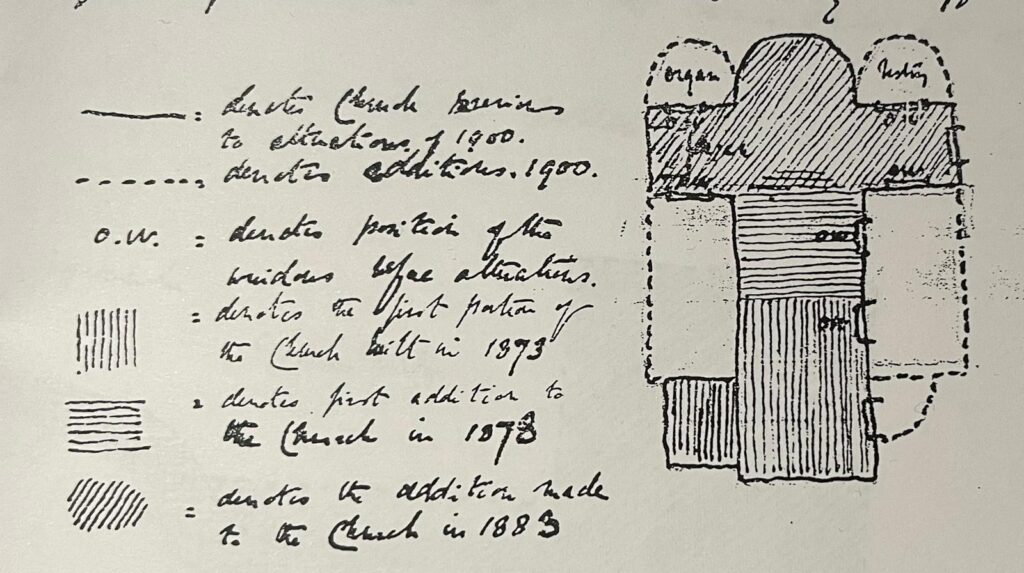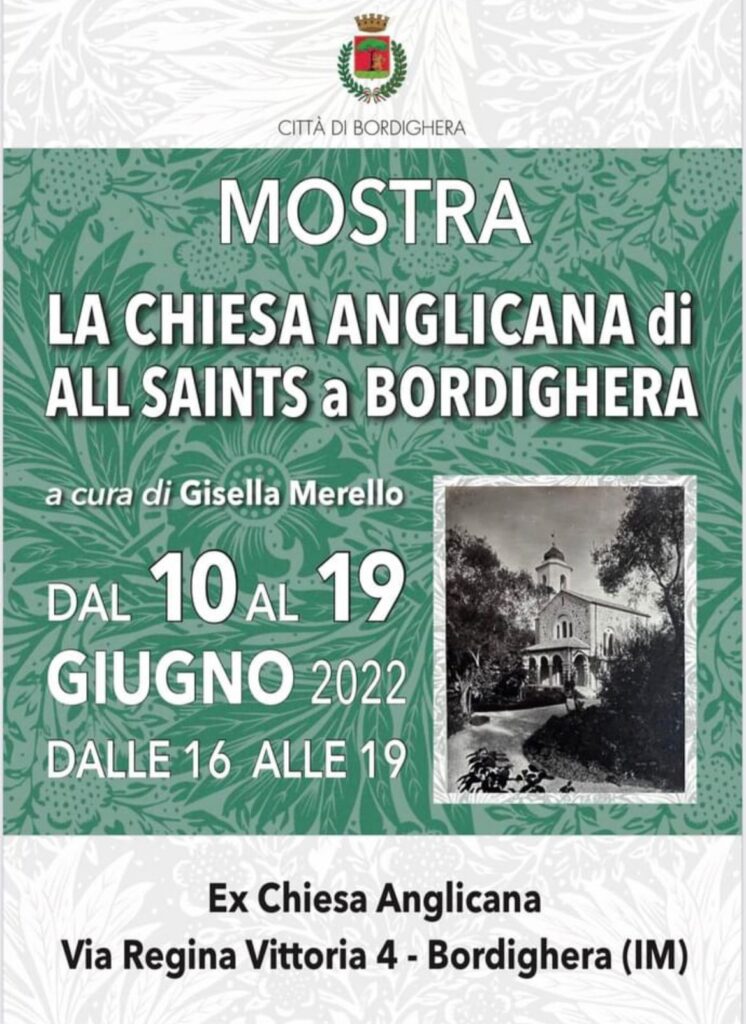If you live within driving distance of Bordighera you have a few more days in which to see a remarkable exhibition linked to Clarence Bicknell. It was indeed in the Chiesa Anglicana that he first practiced on arrival in the town in 1878, albeit a smaller church then than now. Gisella Merello, historian and writer, a Companion of the Clarence Bicknell Association, has written a well-researched book about the church, which this exhibition celebrates and introduces. One of the photos here shows Gisella with another Companion of the Clarence Bicknell Association, mountain walker, botanist and photographer Elisabetta Massardo. Thank you, both, for the photos and videos.


I reproduce here my preface written for Gisella’s book La Chiesa Anglicana di All Saints a Bordighera (Alzani Editore)…
Bordighera for many is the crown of the majesty of the Ligurian coast where the Alps tumble into the Mediterranean. The town combines the sights and sounds of sun-filled nature with stirring local history, a compact hill-top town centre, gastronomy, art and coy charm. No wonder so many visitors from abroad, including the British, adopted Bordighera as their home.
There are many jewels in this crown, from the magnificent villas (Garnier, Regina Margherita, Mariani, Etelinda) and houses of the foreign notables (including Bicknell, Berry, Fanshawe and MacDonald) to botanical gardens, parks, shops and churches. But three of the jewels have a particular place in my heart…
The church of Sant’Ampelio, created in the 4th century on the rocky promontory at the east of the town, was the first site Clarence Bicknell described on his arrival in 1878. Ampelio is the town’s patron saint and the tiny church is a vibrant symbol of Bordighera’s past and a picture-perfect icon of the town today.

My second jewel is of course the Museo Biblioteca Clarence Bicknell, hidden to all but the most ardent tourists and researchers under the giant ficus trees and wisteria creepers below the old town. The museum bears witness to the prolific work of my uncle in botany, archaeology and art and continues to serve the local community’s concerts, exhibitions and conferences as well as scientists from round the world.
My third Bordighera jewel is the Chiesa Anglicana, the church built by the British, the subject of this book and today a vibrant secular space for events of all kinds. When Clarence Bicknell arrived as chaplain of the Anglican Church in Bordighera, Mrs Fanshawe’s 1873 chapel was less than half the size of the present building; it was enlarged in stages in 1878 and 1883. The church was the focal point for Bicknell’s work with the Anglican flock and those from other religious denominations which he liked to include. Its location, architecture, Romanesque arches and tiled tower makes it one of the most beautiful buildings in Bordighera.

When Bicknell’s religious beliefs faltered and he found himself falling for the temptations of the study of flowers, the logging of the 11,000 rock engravings of the Valle delle Meraviglie and his botanical art, it was from the Chiesa Anglicana that he stepped down from The Church. This moment was memorialised by Rémy Masseglia in his wonderful 2016 film of Clarence Bicknell which can be viewed online; Clarence walks forlornly in his chaplin’s cassock through the unlit church, opens the main door and walks firmly forward into the dazzling sun wearing a white suit, a jaunty hat and a massive smile.
The Chiesa Anglicana has a firm place in my own Bordighera life. My wife Susie and I presented here in 2017 the exhibition “Clarence Bicknell – La Passione per i Fiori Diventa Arte”. The generous space in the de-consecrated church was ideal both for the elegant displays of Clarence’s life and for the pleasure of the appreciative visitors; it was impossible not to think of the man himself in his first years in Bordighera. The Anglicana was also the scene of the presentation to me of the 2017 Parmurelu d’Oru prize awarded by the Jury of the Descu Rundu for my support of the Museo Bicknell, for promoting the town of Bordighera in the international media and the scientific community and for promoting worldwide in four language versions the documentary film The Marvels of Clarence Bicknell.
The Chiesa Anglicana remains a fascinating and embracing place, full not just of the legacy of the faithful English but also of the events and animation brought by the Bordighera town council and other organisations. It is so fitting that a proper history of the church, including both the people involved and the architectural history, is being written by such an expert as Gisella Merello. We are honoured today and future generations will appreciate a well-researched assessment of one of my top three jewels in the crown which is Bordighera.
Marcus Bicknell has studied and written on Clarence Bicknell since 1978
and is chairman of the Clarence Bicknell Association www.clarencebicknell.com
